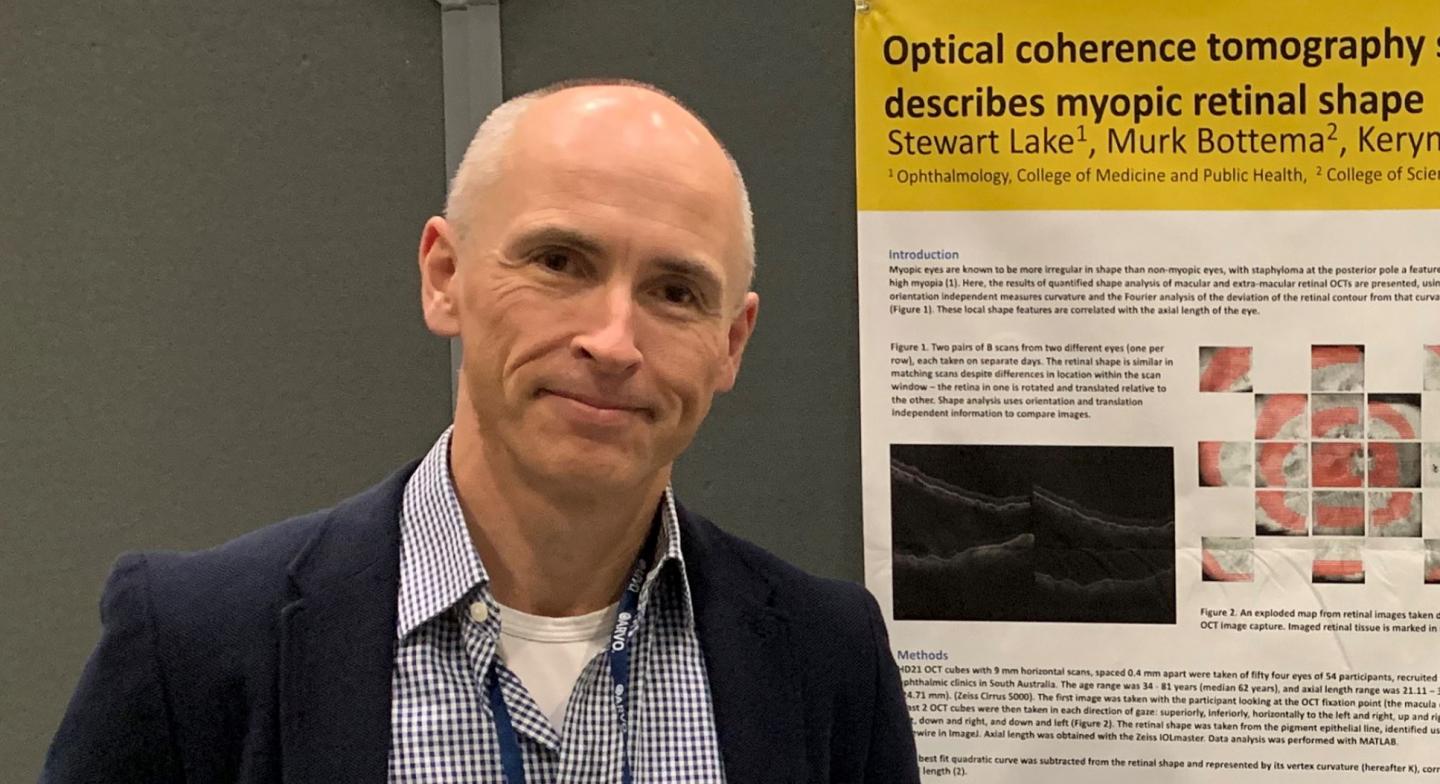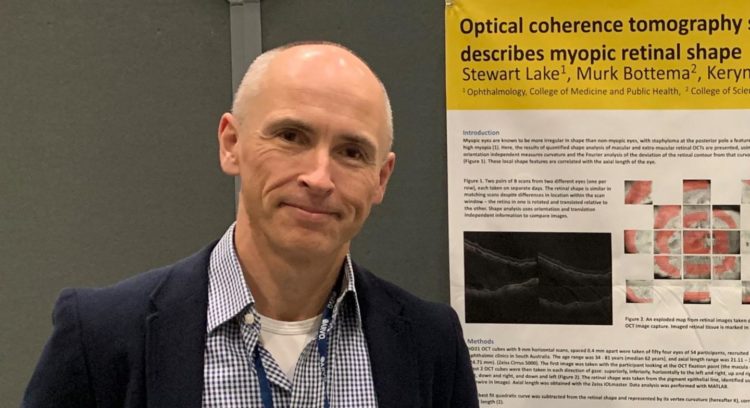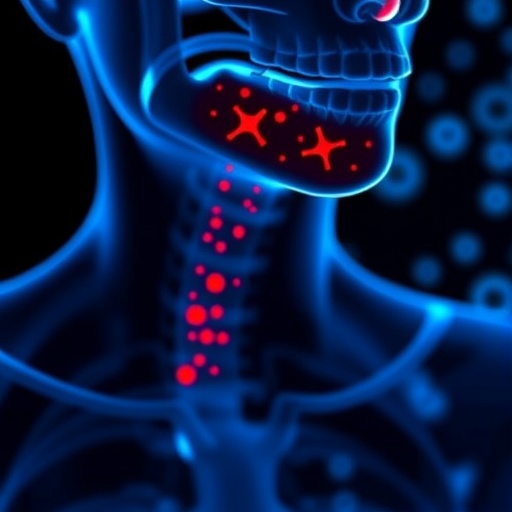Leading cause of vision loss heads for epidemic

Credit: ARVO
The world’s most common vision problem myopia or short/near sightedness, which causes damage to the eye and even blindness, just got easier to assess.
Progressive research at Flinders University in Australia has identified a new method to measure how it affects the eye, a new article in PLOS ONE reveals.
The work was based on testing of 70 volunteers, with the Flinders ophthalmology and medical device research institute experts taking a novel approach with optical coherence tomography (OCT), a device already available in most optometric and all ophthalmic practices.
“Our work uses the OCT and finds irregularities at this scale that correlate with the size of the eye, and therefore the degree of myopia,” says eye specialist Dr Stewart Lake, from Flinders University.
“This may help monitor, measure, and explore the effects of myopia and how it leads to vision loss,” he says, adding further development could make the system suitable for use in regular clinical practice.
Prior research elsewhere with MRI scanning has demonstrated large scale irregularities in the eyeball in highly myopic eyes.
OCT can sample the shape of the eye on a much smaller scale than MRI. The OCT testing will be far cheaper, is more readily available and repeatable as a test, researchers say in the article.
Myopia (short or near-sightedness) is for many an inconvenience requiring glasses or contact lens to correct. However, globally it is an epidemic and a major cause of vision loss and sometimes blindness.
Myopia is defined practically by the strength of lens required to correct eyesight. It was already known myopia relates very strongly to the size/length of the eyeball.
Global estimates forecast up to 5 billion people will have myopia and 1 billion people could suffer with high myopia by 2050, placing a significant burden on health systems to manage and prevent myopia-related ocular complications and vision loss.
This seven-fold increase, between 2000 and 2050, would make myopia the leading cause of permanent blindness worldwide (source – Holden et al ‘Global Myopia Trends 2000-2050’).
High myopia increases the risk of pathological ocular changes such as cataract, glaucoma, retinal detachment and myopic macular degeneration – all of which cause irreversible vision loss
###
The research article, ‘The correlation between optical coherence tomography retinal shape irregularity and axial length’ (December 2019) by S Lake, M Bottema, K Williams and K Reynolds, has been published in PLOS ONE Vol 14, Iss 12 DOI: 10.1371/journal.pone.0227207
Media Contact
Stewart Lake
[email protected]
61-424-463-399
Related Journal Article
http://dx.





